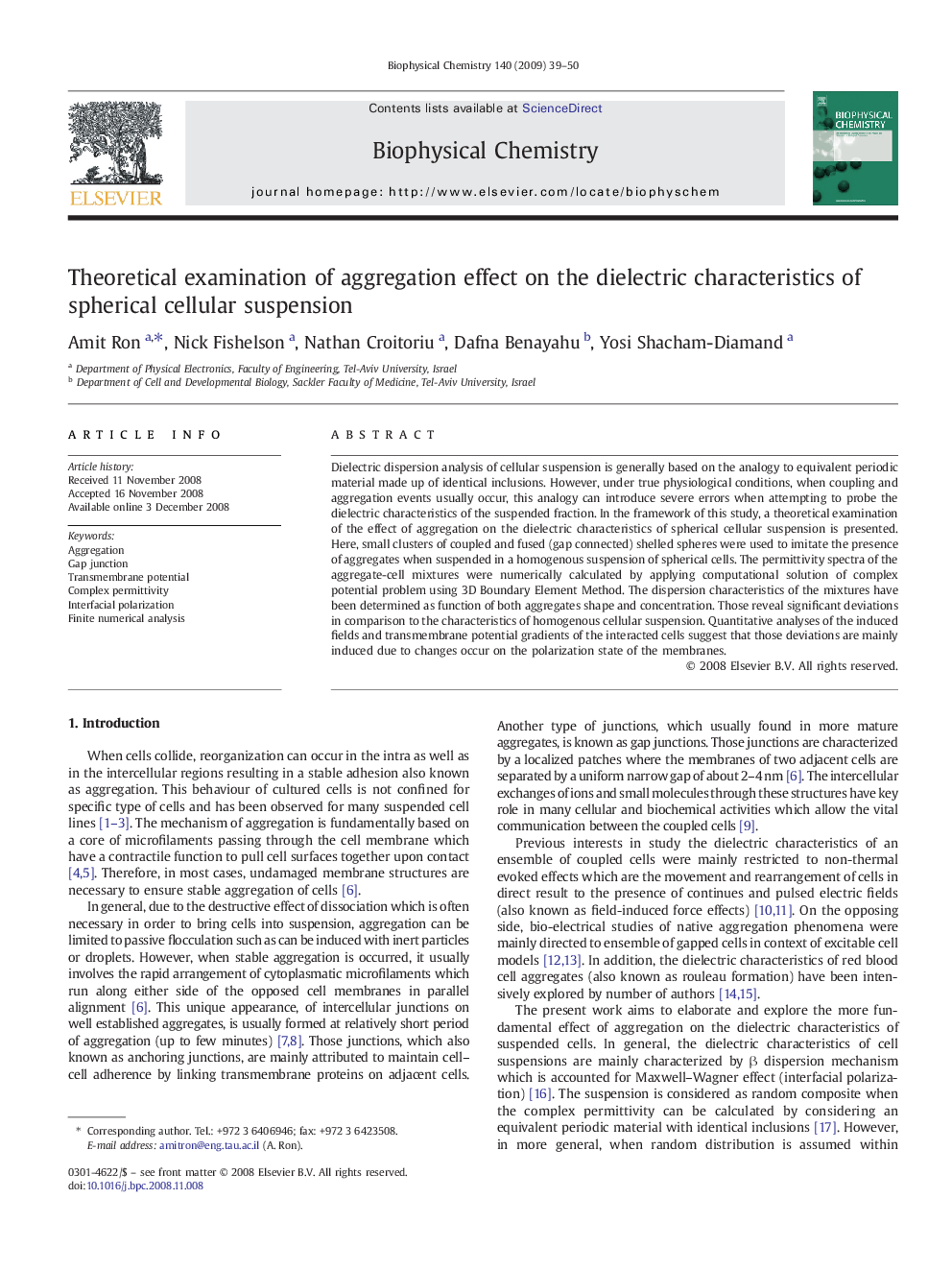| Article ID | Journal | Published Year | Pages | File Type |
|---|---|---|---|---|
| 5371884 | Biophysical Chemistry | 2009 | 12 Pages |
Dielectric dispersion analysis of cellular suspension is generally based on the analogy to equivalent periodic material made up of identical inclusions. However, under true physiological conditions, when coupling and aggregation events usually occur, this analogy can introduce severe errors when attempting to probe the dielectric characteristics of the suspended fraction. In the framework of this study, a theoretical examination of the effect of aggregation on the dielectric characteristics of spherical cellular suspension is presented. Here, small clusters of coupled and fused (gap connected) shelled spheres were used to imitate the presence of aggregates when suspended in a homogenous suspension of spherical cells. The permittivity spectra of the aggregate-cell mixtures were numerically calculated by applying computational solution of complex potential problem using 3D Boundary Element Method. The dispersion characteristics of the mixtures have been determined as function of both aggregates shape and concentration. Those reveal significant deviations in comparison to the characteristics of homogenous cellular suspension. Quantitative analyses of the induced fields and transmembrane potential gradients of the interacted cells suggest that those deviations are mainly induced due to changes occur on the polarization state of the membranes.
